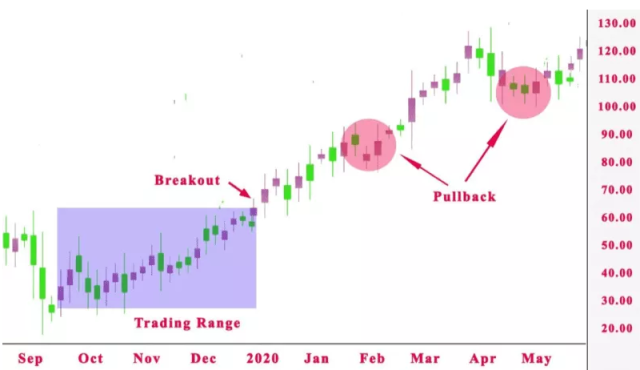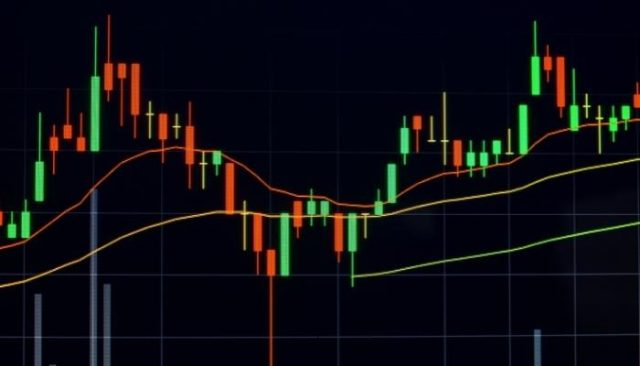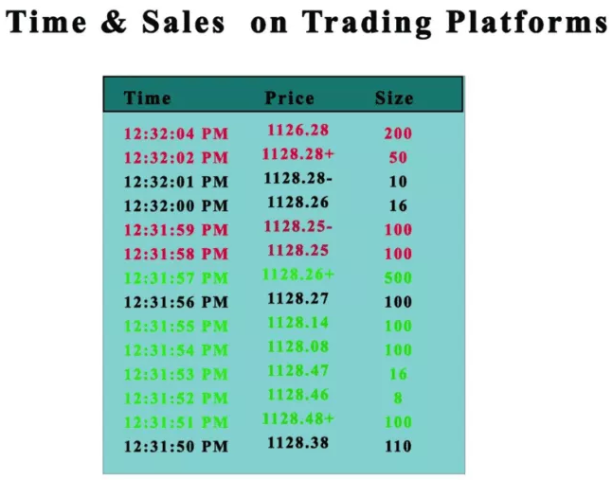How Important Is Tape Reading: Explained By An Expert
By Jordan Blake
January 10, 2024 • Fact checked by Dumb Little Man

Want to jump straight to the answer? The best Stock Brokers are Tradestation and Tradier
The #1 Stocks and Forex Trading Course is Asia Forex Mentor
Modern traders typically associate “tape reading” with something from the past as they sit behind their powerful computers and trading terminals to figure out key price levels.
Even though the concept conjures up distant memories, it is essential to note that day traders still use it in their toolbox today. The process now takes place electronically, as opposed to the old ticker tape, which is the fundamental change.
Ezekiel Chew, a renowned trader, also pointed out that day traders used electronic communication networks for communication before the internet. The data on the tape needed to be accurately read to execute profitable stock trades. With the invention of the first practical stock ticker by Thomas Edison, information about the stock market could be distributed quickly.
This post will discuss, from an expert perspective, what tape reading is, its benefits and drawbacks, and how it can be employed to enhance day trading.
What is Tape Reading

Tape reading, or time and sales, is an ancient method of examining price and volume data for a specific stock. It displays the quantity and variety of transactions occurring on the market and the price reached by buyers and sellers.
Tape reading is a concept new traders may find a bit confusing while learning to trade stocks or commodities.
Quotes on several stocks were collected using a ticker tape machine. The stock's price, symbol, and the number of traded shares were all listed on a piece of paper.
Some professional traders still listen to the tape, but those who do discover that you can get an advantage. It will make their trading more accurate when combined with other indicators.
Modern tape reading has evolved into what we now call technical analysis.
How to Read Stock Price

Knowing how to analyze stock chart data and financial markets is a very important skill that can provide many traders with various intraday positions and swing trading opportunities. To better understand how a stock may perform in the future, investors can rapidly scan a chart to evaluate how the stock has done over a given period.
Some tips to enhance tape reading skills are below:
Always apply a size filter. The tape is flowing too quickly today compared to Livermore's era, and small orders might fill it up. To prevent this, we can filter the minimum and maximum orders in the market so they don't appear in the Level II data window.
Utilize the price movement and day trading tape together. The tape is only used by experienced traders as a confirmation tool for trade entry and exit.
Advantages of Tape Reading over Chartist

In comparison to chartists, tape readers have an edge since they can evaluate intraday data in real-time, turning pages of figures into astonishingly accurate forecasts of short-term price movement.
Users of this almost legendary market skill can also gauge traders' emotional states as they identify the day's leaders and laggards, which is one of its extra benefits. Longer-term trading tactics may benefit from adding energy from tape reading.
You can see what's happening behind the price chart by reading the tape. Depending on the market structure, most traders concentrate on learning how to interpret market prices and determine the price action. A chart, on the other hand, can only display prices and deals that have taken place. In that regard, our information sources are constrained to trading technical analysis.
How to Identify Support and Resistance Levels

One of the most important concepts that many traders use is the concept of support and resistance levels. They are usually one of the first trading tools day traders learn because many technical tools use them to locate or confirm trade patterns.
Support is a price level where falling prices are more likely to pause or reverse. As a result, it is more likely that the price will “bounce” off this level than cross it. The price will probably keep falling until it finds another support level, though, once it has crossed this one.
On the other hand, when a price reaches a level of resistance, it usually starts to fall or slow down. Instead of breaking through this level, the price is more likely to return from it. But if this barrier is broken, the price can rise until it encounters another obstacle.
Role of Time and Sales

Charts and graphs are used together with time and sales data to estimate share price movement. Bar and candlestick charts, for instance, aggregate trading ranges over a specified amount of time and can be used to spot patterns like the handle, double bottom, and Hikkake. This gives a comprehensive picture of pricing and volume trends.
An investor can develop a more thorough picture of a security's tendencies when combined with the more acceptable trade data from time and sales. Time and sales is a history of every stock transaction made during a trading day that typically includes the trade size, price, and time.
Investors utilize the tape to identify market movements by developing an instinct to feel how the tape responds to those changes. Investors can use sales and time data to decide whether or not to execute their trade. The volume of data updates that come in from real-time streams can surprise inexperienced investors.
One basic technique to obtain a sense of things is to observe the direction, volume, and price for a brief period. The investor can now keep an eye out for various indicators, such as spikes in volume or a significant change in the number of deals. Stocks with higher dividend yields are likely to be more successful for investors employing a time and sales data strategy.
Pros and Cons of Tape Reading Pros and Cons
Pros
- Excellent tool for price predicting
- It enables synching of exits for day traders
- It is excellent for both veterans and newcomers
- It is easy to identify orders with large volumes
Cons
- It's challenging to master time and sales
- It is ineffective when used alone for trade analysis
Best Stock and Forex Trading Course

Asia Forex Mentor offers the best forex trading education in Asia. The course is set up so that you can earn money while learning. You'll be able to trade forex profitably with a skilled trader's help. In Singapore and other sites worldwide, tens of thousands of people from the United States, the United Kingdom, and other Asian countries have been taught.
Ezekiel Chew's teaching method is founded on the principle of return on investment, which states that if you invest $1, you will gain $3. It's not about zany strategies or elaborate procedures. Professional traders and financial organizations use his authorized system. He is the driving force behind the growth of various companies, including DBP, the Philippines' second-largest state-owned corporation.
Due to his strategy's effectiveness, many full-time traders have joined the program with little to no prior trading experience and emerged successful.
| RECOMMENDED TRADING COURSE | REVIEW | VISIT |
|---|---|---|
 | #1 Forex, Crypto and Stocks trading course. Ranked most comprehensive by Investopedia and Best by Benzinga. Free to Try! |  |
Best Stock Brokers
| Broker | Best For | More Details |
|---|---|---|
 | Advanced Traders Read Review | securely through Tradestation website |
 | Intuitive Platforms Read Review | securely through Tradier website |
 | Powerful Services at a Low Cost | securely through Tradezero website |
 | Professional Forex Traders Read Review | securely through Interactive Brokers website |
Conclusion: Tape Reading

In conclusion, spend as much time as you can studying the tape and how the stock price responds to various events if you want to enhance your tape reading abilities. Please don't get frustrated, as it may take some time for you to acquire the skills necessary to read the tape effectively.
We don't utilize stock market tape reading as a stand-alone trading technique but as a confirmation tool when trading currencies. Tape reading can give you a competitive advantage over the trader next to you, whether you're a scalper or a day trader.
A skilled trader with risk management strategies and a thorough understanding of the market environment can initiate a profitable position. As they were formerly named, ticker tapes are a crucial skill that offers the information needed to start buy and sell orders.
Tape Reading FAQs
How Important is Tape Reading?
Large investment banks and hedge funds frequently use the trading strategy known as “reading the tape.” All asset classes can be analyzed, including stocks, bonds, currencies, and commodities.
You shouldn't just rely on the technique as a trader but incorporate it with other trading strategies like price action and fundamental research.
Day traders can benefit from tape reading because it provides real-time intraday data. For making short-term price predictions, this is helpful.
Tape reading can increase proficiency when used with long-term trading techniques.
How do you practice Reading Tape?
Going through an example of an entire trading session is the best method to comprehend how you may use tape reading in your day trading operations. It involves applying it to different market sessions, including the pre-market session, the beginning of the trading day, the noon session, and the closing session.
In the pre-market session, check events from the previous night to start the day to gain insight into a profitable market direction. At the beginning of the trading day, look at how the market of your choice opens; and the relationship between price fluctuations and opening. A higher bullish attitude typically accompanies levels above the starting values. Meanwhile, bears are expected to seize control if the levels fall below them.
At the noon session, traders should be on the lookout for activities between the opening hour of trading and the midpoint of the trading session to identify a likely turning point that could result in price breaks or reversals. At the close of the trading session, the tape-reading trader anticipates that whatever intraday patterns he has spotted will mature during the final hour of trading. Prices typically spike or plummet in the final 30 to 15 minutes of the trading session.
Jordan Blake
Jordan Blake is a cultural commentator and trending news writer with a flair for connecting viral moments to the bigger social picture. With a background in journalism and media studies, Jordan writes timely, thought-provoking content on everything from internet challenges and influencer scandals to viral activism and Gen Z trends. His tone is witty, observant, and sharp—cutting through the noise to bring readers the “why” behind the “what.” Jordan’s stories often go deeper than headlines, drawing links to pop culture, identity, and digital behavior. He’s contributed to online media hubs and social commentary blogs and occasionally moderates online panels on media literacy. When he’s not chasing the next big trend, Jordan is probably making memes or deep-diving into Reddit threads. He believes today’s trends are tomorrow’s cultural history—and loves helping readers make sense of it all.













